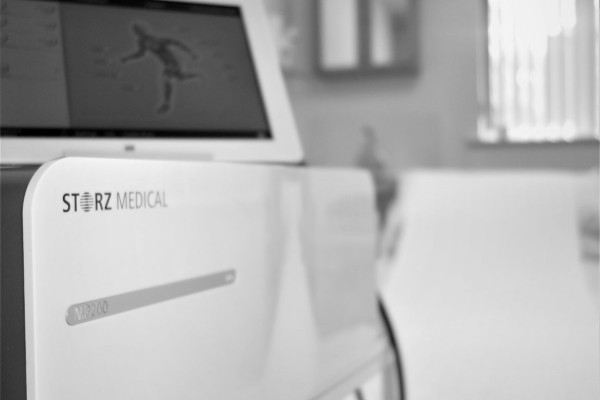
Shockwave Therapy
A healthy outside starts from the inside. – Robert Urich
What is shockwave therapy and how is it applied?
The full name for the treatment is Extra Corporeal Shockwave Therapy (ESWT). It is a procedure where shock waves are passed through the skin to the injured part of the body, using a special device. Extracorporeal means outside of the body. The Shockwave device sends an acoustic wave of high energy into the targeted tissues. It is a mechanical wave, not electrical and is completely non-
A high water contact gel is applied to the skin This has no effect other than to helping to carry the wave of energy through the skin into the tissues. The applicator is then paced over the painful tendon and is moved over the area of tenderness. Compressed air hits a widget inside the applicator head and the widget then hits a metal plate on the applicator breaking the sound barrier momentarily and producing a sonic wave which then travels into the tissues. The impact of the energy wave passing into the tissues can feel uncomfortable. The machine makes a clicking sound as it operates. The usual length of treatment is approximately 5 minutes.

How does it work?
The treatment initiates a pro-
How many sessions should I have?
The recommendation is between 3 and 5 sessions no more than a week apart.
How does it work?
The treatment initiates a pro-
How many sessions should I have?
The recommendation is between 3 and 5 sessions no more than a week apart.

More Shockwave Therapy Information
What are the effects?
New blood vessel formation:
Arterioles are re-
Reversal of chronic inflammation:
Chronic inflammation occurs when the inflammatory response is not completely stopped. Shortwave has been shown to decrease the high level of inflammatory mediators .
Stimulation of collagen production:
Collagen synthesis is critical for repair of the injured tendon and shockwave therapy accelerates pro-
Chronic pain reduction:
Chronic pain travels along C-
How will I feel after treatment?
The treatment can be painful and leave a small area of redness and inflammation. Rest is recommended, except for the exercises given. If the after-treatment is very sore the therapist can reduce the intensity of application, which may elongate healing time but will make the area less painful following treatment. We recommend that anti-
Are there circumstances which will prevent treatment? (Contra-
If you have a blood clotting disorder (including thrombosis)
If you are taking oral anti-
If you have received a Steroid injection within 6 weeks
If tumours are present at the treatment site
If you have an infection or skin abrasion at the treatment site
If you are Under 18
Caution:
If you are pregnant
If you have a pacemaker
What machine do you use?
We use the Storz Shockwave Machine. There are different types of machine producing waves with different methods, so it is important to look at information about this particular machine as results for different types of machine vary.

Jo Hartshorn
Director/Owner - MSc. MMACP. MCSP. Grad Dip Sp Inj.
MSK (FCP) Physiotherapist
Musculoskeletal
Rehabilitation post-op/injury
Headaches and migraines
TMJ and face pain
Adolescent problems
Nevzat Yuksel
MSK (FCP) Physiotherapist - BSc (Hons). MCSP.
Musculoskeletal
Rehabilitation post-op/injury
Biomechanical Assessments
Sports injuries
Functional rehabilitation
Harsha Gadre
MSK (FCP) Physiotherapist - BSc. MSc (Muskuloskeletal). MCSP
Musculoskeletal
Rehabilitation post-op/injury
Sports Injuries/Injury Prevention
Sports Performance Enhancement
Rigid/Kinesio/Dynamic Taping
Looking for another service we offer?
Physiotherapy
Sports Injuries
Performance Enhancement
Athlete Screening
Gait Analysis
Migraine, Face Pain, TMJ
Adolescent Services
Shockwave Therapy
Scan Referral
Awaiting NHS physio?
SERVICES WE OFFER
Physiotherapy
Sports Injuries
Performance Enhancement
Athlete Screening
Gait Analysis
Migraine, Face Pain, TMJ
Adolescent Services
Shockwave Therapy
Scan Referral
Awaiting NHS physio?
Want to get in touch with our experts or to directly book an appointment online?
